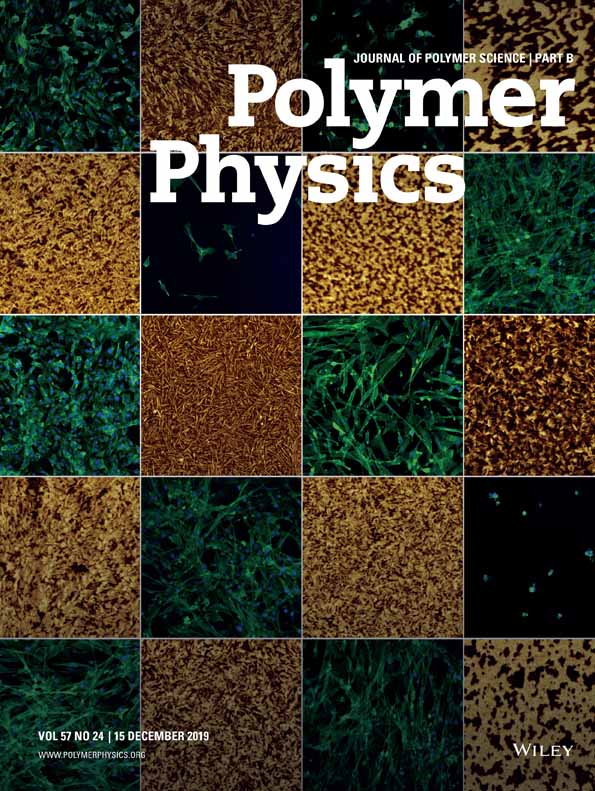Thermally stimulated depolarization current in electron-irradiated poly(vinylidene fluoride-trifluoroethylene) (56/44 mol %) copolymers
Abstract
The effect of electron irradiation on poly(vinylidene fluoride-trifluoroethylene) (56/44 mol %) copolymers was studied with dielectric constant measurements, differential scanning calorimetry (DSC), X-ray diffraction, thermally stimulated depolarization current (TSDC) spectroscopy, and polarization hysteresis loops. The dielectric relaxation peaks, obeying the Vogel–Fulcher law, indicated that the copolymers were transformed from a normal ferroelectric to a relaxor ferroelectric. The X-ray and DSC results showed that both the crystalline and polar ordering decreased after irradiation, indicating a partial recovery from trans–gauche bonds to local trans bonds (polar ordering). Moreover, the peak temperature decreased with the irradiation dose in the TSDC spectra; this demonstrated fewer dipoles and crystalline regions in the irradiated copolymer films during the ferroelectric–paraelectric transition and was consistent with polarization hysteresis loop measurements. © 2004 Wiley Periodicals, Inc. J Polym Sci Part B: Polym Phys 42: 1099–1105, 2004




